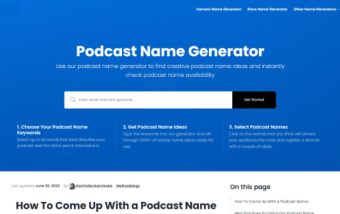How To Optimize Images For SEO? Easy Steps To Improve Site Speed And Ranking
Jul 15, 2025

Jul 15, 2025

Jul 12, 2025

Jul 12, 2025

Jul 12, 2025

Jul 10, 2025

Jul 07, 2025

Jul 07, 2025

Jul 04, 2025
Sorry, but nothing matched your search "". Please try again with some different keywords.


In today’s digital age, video content is extremely popular since engaging visuals communicate messages effectively.
However, as we dive deeper into the variety of video formats and devices, the need for powerful video converters becomes evident. Video converters are crucial tools for both professionals and average users.
Whether you’re a content creator, a marketer, or a movie enthusiast, these converters can help you a lot to achieve your goals and make your videos more accessible. But with countless programs available on the market, it may be challenging to choose the right one.
This article offers insights into the nuances of video conversion and tips for selecting a high-quality tool.
Choosing the appropriate video converter is crucial for maintaining video quality and ensuring compatibility across devices. Here’s a step-by-step guide to help you choose the best video converter for your needs:
Firstly, you should determine your requirements and expectations, whether you are converting for personal use or professional presentations. The next thing to know is frequency, so if you convert videos daily, you need a solid tool and a paid subscription. You should also find out for yourself the range of formats you’ll be converting from and to.
Ensure that the software is compatible with your operating system, whether it’s Windows, Mac, or Linux. There are online video converters that allow users to convert videos on various operating systems without downloading and installing additional software.
A good converter should support a variety of video formats, from popular to less common. It should also support audio formats in case you need to extract or convert audio from videos.
Another thing to consider when choosing a video converter is the quality of the output. Look for a converter that offers high-quality output with minimal loss in resolution or clarity. If you’re converting large files or batches of videos, choose a converter with fast conversion rates. If you have multiple videos to convert, a batch conversion feature can save time.
A converter with a user-friendly interface will make the process smoother, especially if you’re not tech-savvy. Try to find a converter with a well-designed interface and clear instructions to save you time and avoid frustration.
Video converters may offer basic video editing tools, which can be handy if you want to make quick edits. So consider programs with built-in editing features to enhance your videos easily without using an additional tool.
While there are free video converters, they might come with limitations or watermarks. Paid versions often provide more features and better support. The best option is to use the trial version to assess its performance and suitability for your needs.
It’s always beneficial to have access to reliable customer support in case you encounter issues. You can check reviews to know the level of customer support services. Regular updates can be essential for keeping your converter up-to-date with evolving formats and technologies.
This guide will help you pick up a decent video conversion tool. Additionally, you can find useful tips on how to conduct a reverse search video.

There are many more high-quality programs for video conversion, but we singled out the three best tools with straightforward interfaces and versatile features to meet diverse needs. Let’s explore their pros and cons:
Movavi is a free video converter with a user-friendly interface, AI-powered upscaling, and a compression option. It has no file or size limits and generates high-quality output even if the initial quality isn’t good. Movavi offers built-in video editing tools, so you can enhance your videos after conversion. Consider that it doesn’t have advanced conversion features and leaves a watermark on your videos in a trial version.
FonePaw is a multifunctional video converter that can change the format of any video or audio file without quality loss. It compresses and edits videos within a few clicks. You can enjoy batch conversion, GPU acceleration, AI technology, and built-in filters and effects. Keep in mind that it isn’t free, and a full version may not be budget-friendly.
Media Encoder is known as a professional converter that integrates with other Adobe products to streamline the workflow. It supports a variety of video and audio formats and provides extensive control over encoding settings. This tool offers batch processing and distributed encoding to speed up the process. The software can be resource-intensive and costly.
We hope these tips will help you understand video converters better and know how to choose the right tool. Considering different factors and knowing your own needs, you can make an informed decision and enjoy videos on various devices.
Read Also:
Ankita Tripathy loves to write about food and the Hallyu Wave in particular. During her free time, she enjoys looking at the sky or reading books while sipping a cup of hot coffee. Her favourite niches are food, music, lifestyle, travel, and Korean Pop music and drama.
View all Posts
How To Optimize Images For SEO? Easy Steps To...
Jul 15, 2025
Quickwin: Your Gateway To Premium Online Ente...
Jul 12, 2025
Top 7 HVAC Marketing Mistakes That Are Tankin...
Jul 12, 2025
8 Top AI Market Research Tools For Fast And A...
Jul 12, 2025
How A Smart Seo Agency Uses Guest Posting To ...
Jul 10, 2025

